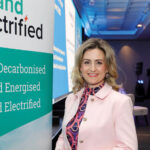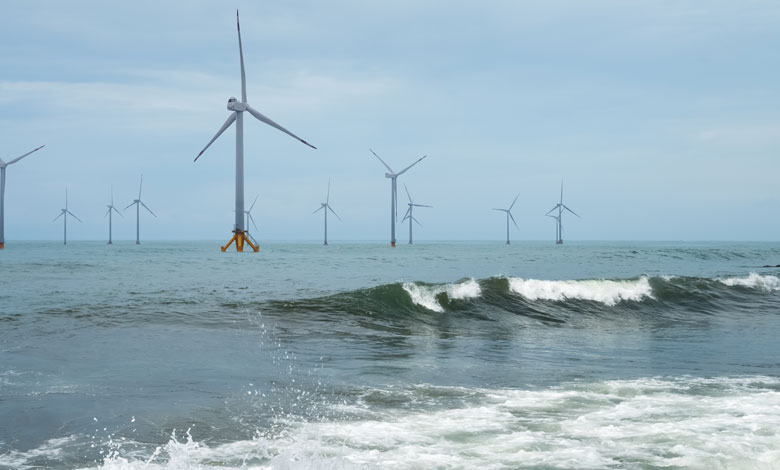
It is time to electrify Ireland
14th October 2025
Unlocking our underground advantage: Geothermal energy
14th October 2025Post-2030 vision for offshore renewable energy

Aisling Greene, Principal Officer in the Offshore, Environment and Future Development Division at the Department of Climate, Energy and the Environment, discusses the long-term framework for offshore renewable energy, the opportunities identified through technical assessment, and the role of innovation in shaping a sustainable energy mix.
Ireland’s offshore renewable energy (ORE) sector is undergoing a significant transformation. With the first phase of development targeting 5GW of offshore wind by 2030, attention within government is already turning to the longer-term horizon and the policies needed to unlock the next wave of investment.
Greene outlines the remit of her division: “There is a dedicated team dealing with the auctions and their terms and conditions. My team focuses on what we call the ‘post-5GW landscape’, looking at how we can fill policy gaps and plan for the future growth of offshore renewable energy in Ireland.”
A plan-led regime
Central to this work is the Government’s Future Framework for Offshore Renewable Energy, first published in 2024 and updated in May 2025. The framework, Greene explains, sets out a cross-government approach, bringing together contributions from multiple departments and agencies.
“The fundamentals of the policy have not changed, but the updated action plan reflects new publications and the progress made across government. From the State’s point of view, this is still a relatively new policy space, and a lot has been achieved in terms of building capacity. The establishment of MARA [the Maritime Area Regulatory Authority] and the shift in focus at organisations such as the Marine Institute are examples of how the State is adapting.”
The move to a plan-led regime is, she says, a step-change in how Ireland approaches offshore development. “Rather than projects progressing sequentially around the coast, the National ORE Designated Maritime Area Plan [DMAP] process will take a comprehensive view of the seabed. This is about being more time-efficient, resource-efficient, and ensuring development happens in the right locations.”
Assessing potential
One of the most significant developments in the past year has been the publication of the Offshore Wind Technical Resource Assessment (TRA). Commissioned by government, the assessment is the first of its kind to provide a detailed analysis of Ireland’s offshore energy potential.
“The TRA is evidence base which looked at technical constraints such as water depth, existing infrastructure, and shipwrecks. It also considered issues like where the Irish supply chain should focus, the potential for floating demonstrator projects, and opportunities for interconnection.”
“We know from the history of wind and solar that early-stage technologies can appear expensive, but costs fall as they mature.”
The findings were striking. The assessment identified a potential of between 3.5GW and 18GW of fixed offshore wind that could be developed in addition to the 5GW already targeted.
“The range is wide because it depends on how ambitious we want to be, and which constraints are applied,” Greene explains. “But what is clear is the enormous potential. It confirms what we all knew intuitively, but now we have the technical evidence.”
Crucially, the assessment also found that fixed offshore wind remains cheaper than floating across all technically feasible locations. “This reinforces the view that our immediate focus should be on fixed wind, but it also highlights the longer-term opportunities in floating technology as costs evolve,” Greene adds.
International collaboration
Greene notes that Ireland has been proactive in learning from other countries further advanced in offshore wind deployment. “We engage very well with colleagues at EU level, but also bilaterally with countries such as the UK, Denmark, and the Netherlands. We describe ourselves as a ‘fast follower’ – we want to learn from the lessons of others while moving at pace ourselves.”
This international dimension, she suggests, will also play a role in the future of renewable energy exports. “Export potential is longer-term, but we are examining the opportunities for greater interconnection and how alternative energy products and services could feed into international markets.”
Driving innovation
While the Government’s priority remains delivering 2030 targets, Greene’s division is also looking to the future. “Fixed offshore wind is the most commercially viable option today, but to meet our 2050 climate and energy goals we need a diverse mix of technologies.”
To support this, a new innovation policy is being prepared. “The IEA has estimated that 45 per cent of the emissions savings required will come from technologies that are not yet commercially deployed. We know from the history of wind and solar that early-stage technologies can appear expensive, but costs fall as they mature. Our aim is to put the right policies in place now so that innovative solutions can develop here.”
The policy will support areas such as floating wind demonstrators, wave energy, and other ocean technologies. “We envisage the National DMAP providing dedicated space for innovation. Importantly, we want to be less prescriptive about which technologies can go in which areas, leaving room for experimentation. This also aligns with feedback we have received from coastal communities, who may favour different kinds of projects in different regions.”
Unlocking regional benefits
Greene highlights that innovation in ORE is not just about diversifying Ireland’s energy system but also about delivering wider economic benefits. “The development of native industries and supply chains is key. Offshore renewable energy can provide opportunities for regional development, particularly in coastal areas such as the Atlantic seaboard. This is about jobs, investment, and creating sustainable growth alongside decarbonisation.”
Looking ahead
Reflecting on the progress so far, Greene is clear about the next steps. “The review of the Future Framework reaffirms the Government’s commitment to ambitious targets. It provides a high-level update and clarifies where timelines have shifted. But more importantly, it signals that we are preparing now for what comes after 2030.”
The challenge, she acknowledges, is significant. “This is a new policy area for the State, and we are building the capacity as we go. But with the evidence from the technical resource assessment, the plan-led approach of the National DMAP, and a focus on innovation, we are putting the structures in place to ensure Ireland can fully realise the potential of offshore renewable energy.”

